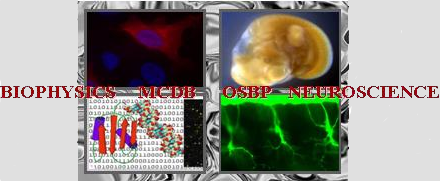Poster abstracts
Poster number 48 submitted by Morgan Bauer
Characterization of Glutamyl-Prolyl-tRNA Synthetase Neurological Disease-causing Variants
Morgan Bauer (Department of Chemistry and Biochemistry, Center for RNA Biology, Ohio State University, Columbus, OH, USA. *Bauer.715buckeyemail.osu.edu ), Alexandra Chapleau (Department of Neurology and Neuroscience, Department of Pediatrics), Brianna Young (Department of Chemistry and Biochemistry, Center for RNA Biology, Ohio State University, Columbus, OH, USA. ), Genevieve Bernard (Department of Neurology and Neuroscience, Department of Pediatrics), Karin Musier-Forsyth (Department of Chemistry and Biochemistry, Center for RNA Biology, Ohio State University, Columbus, OH, USA. )
Abstract:
Glutamyl-prolyl-tRNA synthetase (EPRS) is a unique bi-functional aminoacyl-tRNA synthetase (ARS) that ligates proline and glutamic acid onto their respective tRNAs. The two catalytic cores, glutamyl- (ERS) and prolyl-tRNA synthetase (PRS) are connected by a linker (WHEP) domain that harbors three helix-turn-helix motifs. The N-terminus of EPRS has an appended GST-like domain that is important for protein-protein interactions within the mammalian multi-tRNA synthetase complex (MSC). The MSC is a cytoplasmic complex that houses seven additional ARSs and three scaffolding proteins. The complex has been proposed to boost aminoacylation efficiency and promote channeling of aminoacyl-tRNA to the ribosome for efficient mRNA translation. Reports of missense mutations in the EPRS1 gene have been linked to patients diagnosed with hypomyelinating leukodystrophy (HLD), a severe neurological disorder that is characterized by the loss of myelin in the central nervous system, and other general multi-organ phenotypes. Currently, no therapeutics are available to treat EPRS1-related diseases. In this work, we studied novel bi-allelic point mutations from five affected individuals who were diagnosed with HLD or other neurological disorders. We chose mutations located in all four domains of EPRS and studied them in the context of separate recombinant ERS and PRS domains containing portions of the WHEP linker. Aminoacylation assays showed that all of the PRS mutants displayed significantly altered aminoacylation kinetics and M1037V and F1063S have decreased tRNA binding capabilities in vitro. Y1130S, a PRS catalytic domain mutant, is significantly destabilized; this variant has a Tm ~13°C lower than WT and is digested more rapidly by trypsin. P1482T, located in the zinc-binding domain, doesn’t impact zinc binding, but induces long-range conformational changes that may affect nearby catalytic residues. In contrast, the ERS mutations have little effect on aminoacylation activity and showed no change in thermal stability relative to WT. We propose that the ERS disease- causing mutations may impact protein-protein interactions and/or disrupt its non-canonical functions. Taken together, this work furthers our understanding of EPRS1 disease mutations with implications for the development of new therapeutics.
Keywords: RNA binding protein, tRNA, leukodystrophy
